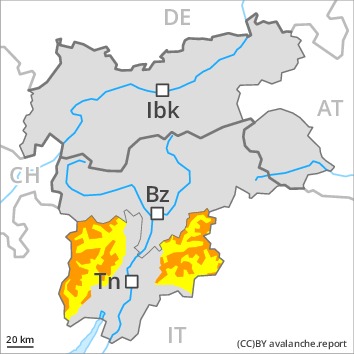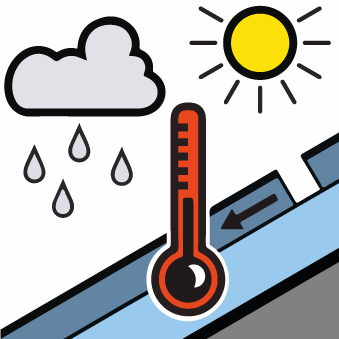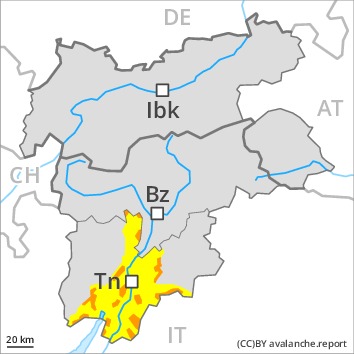
Danger level
 | treeline
|
Avalanche Problem
 | | Wind-drifted snow |
|  | |  |
 | | Wet snow |
|  | |  |

Wind slabs and weakly bonded old snow require caution. As the day progresses, wet and gliding avalanches are possible.
Weak layers in the old snowpack can be released especially by large additional loads. Caution is to be exercised in all aspects above approximately 1900 m, especially on very steep slopes, as well as at transitions from a shallow to a deep snowpack. Avalanches can also penetrate deep layers and reach quite a large size. In addition the fresh wind slabs at high altitudes and in high Alpine regions are prone to triggering in some cases. These can be released by small loads.
As a consequence of warming moist avalanches are possible. In addition there is a danger of gliding avalanches, also on shady slopes. Avalanches can reach large size in isolated cases.
Caution and restraint are recommended.
Snowpack
dp.2: gliding snow
dp.7: snow-poor zones in snow-rich surrounding
Towards its base, the snowpack is largely stable. Faceted weak layers exist in the centre of the snowpack, especially above approximately 1900 m.
As a consequence of a strong southwesterly wind, further wind slabs formed, in particular at high altitudes and in high Alpine regions.
The spring-like weather conditions will give rise to gradual moistening of the snowpack. Very steep sunny slopes and low and intermediate altitudes: The snowpack is moist and its surface has a melt-freeze crust that is barely capable of bearing a load.
Tendency
Slight decrease in danger of dry avalanches. The danger of gliding avalanches and moist snow slides will persist.

Danger level
 | treeline
|
Avalanche Problem
 | | Wind-drifted snow |
|  | |  |
 | | Wet snow |
|  | |  |

Wind slabs and weakly bonded old snow require caution. As the day progresses, wet and gliding avalanches are possible.
As a consequence of a strong wind from southwesterly directions, easily released wind slabs will form in the course of the day over a wide area, especially on east, north and southeast facing slopes above approximately 2000 m. Caution is to be exercised in particular on very steep slopes, as well as at transitions from a shallow to a deep snowpack. Avalanches can additionally in isolated cases be released in the weakly bonded old snow, mostly by large additional loads.
As a consequence of warming moist avalanches are possible, even quite large ones. In addition there is a danger of gliding avalanches and moist snow slides, also on shady slopes.
Snowpack
dp.2: gliding snow
dp.7: snow-poor zones in snow-rich surrounding
Towards its base, the snowpack is largely stable. Faceted weak layers exist in the centre of the snowpack, especially above approximately 1900 m.
As a consequence of a strong southwesterly wind, further wind slabs formed, in particular at high altitudes and in high Alpine regions.
The spring-like weather conditions will give rise to gradual moistening of the snowpack. Very steep sunny slopes and low and intermediate altitudes: The snowpack is moist and its surface has a melt-freeze crust that is barely capable of bearing a load.
Tendency
Slight decrease in danger of dry avalanches. The danger of gliding avalanches and moist snow slides will persist.










